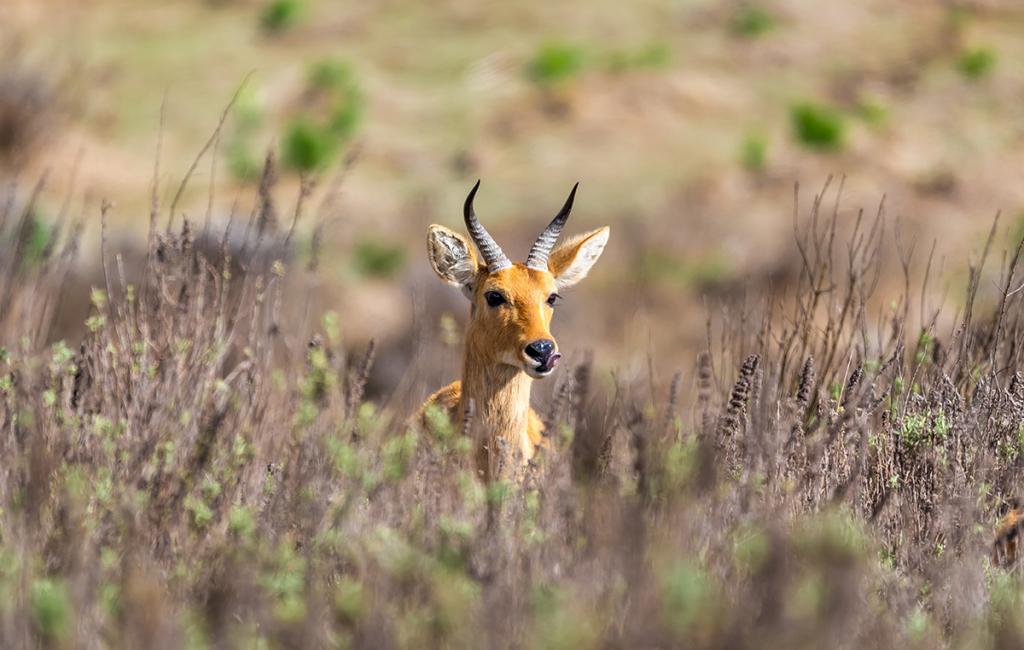The Climate Adaptation and Protected Areas Initiative: What you need to know
The populations of millions of animal and plant species continue to decline at accelerating rates across the globe, with many under threat of extinction. The Climate Adaptation and Protected Areas (CAPA) Initiative will contribute to addressing this challenge.
The populations of millions of animal and plant species continue to decline at accelerating rates across the globe, with many under threat of extinction. This trend is only expected to worsen, particularly with rising temperatures, increasingly erratic precipitation, and more frequent and extreme weather events. The Climate Adaptation and Protected Areas (CAPA) Initiative, which launched in September 2023, will contribute to addressing this challenge.
What is the CAPA Initiative, and what issues does it aim to address?
The CAPA Initiative is a 3-year program funded by Global Affairs Canada. The initiative aims to promote the use of nature-based solutions to strengthen climate resilience and protect biodiversity in and around protected areas. Specifically, it will focus on the Kavango-Zambezi and Greater Virunga landscapes in sub-Saharan Africa, as well as marine and terrestrial sites in Belize and Fiji.
The initiative will contribute to efforts to address the twin crises of biodiversity loss and climate change that are heavily impacting the well-being of both people and the planet. Biodiversity and ecosystems are essential for the processes that support all life on Earth—without a wide range of animals, plants, and microorganisms, we won’t have clean air to breathe, water to drink, or food to eat.
The CAPA Initiative will implement several nature-based activities within the selected landscapes while also facilitating knowledge sharing and peer learning on nature-based activities in protected areas, contributing to the protection of the most vulnerable communities and species in and around these important landscapes.
What are nature-based solutions to climate change, and how will they be used in this project?
Nature-based solutions (NbS) for climate change adaptation are actions designed to protect, restore, or sustainably manage ecosystems to increase resilience and reduce the vulnerability of people and the environment to climate change. These actions can range from strategies such as the sustainable management or restoration of forests, grasslands, and wetlands to restorative agriculture and ocean-based practices, including planting seagrass meadows or growing kelp to regenerate or expand marine ecosystems.
For the CAPA Initiative, our main focus will be on integrating nature-based solutions for climate change adaptation into protected-area management and conservation interventions in and around the target landscapes.
Why focus on protected areas?
Protected areas are among the most important tools available for building human and natural resilience. Protected areas safeguard species, habitats, watersheds, and ecosystem services; support households and communities with natural resource-based livelihoods; and contribute to mitigation efforts through carbon sequestration and avoided land degradation. Anchoring the CAPA Initiative around protected areas and surrounding critical landscapes—and ensuring that the design and management of activities within these spaces account for climate risks—provides a very strong foundation to reduce the vulnerability of both the local communities and the ecosystems they rely on to climate change.

In which geographical areas will the CAPA Initiative operate, and how were these locations chosen?
The CAPA Initiative will implement nature-based activities in four landscapes. In sub-Saharan Africa, the initiative will focus on several sites in the Kavango-Zambezi (KAZA) Transfrontier Conservation Area, which cuts across Angola, Botswana, Namibia, Zambia, and Zimbabwe, and the Greater Virunga Landscape (GVL), which straddles the borders of the Democratic Republic of the Congo (DRC), Rwanda, and Uganda. The initiative will also focus on specific marine and terrestrial sites in Belize and Fiji.
The sites were intentionally selected to cover marine, coastal, and terrestrial ecosystems and landscapes across all of the International Union for Conservation of Nature’s six categories of protected areas. Another factor that influenced site selection was the presence or absence of potential implementation partners with an active presence in the landscapes and seascapes, an established track record in implementing nature-based solutions for adaptation interventions, and strong existing relationships with the local communities. This last aspect was particularly important given that the CAPA Initiative has just 3 years in which to deliver impact. All site locations are also situated in countries eligible for Official Development Assistance in sub-Saharan Africa, Asia-Pacific, and the Caribbean.
What makes the CAPA Initiative unique from a climate adaptation perspective?
The integration of NbS into protected area management and conservation interventions is relatively new: conservation interventions and management plans that are explicitly designed to simultaneously address the impacts of climate change, the loss of biodiversity and degradation of ecosystems, and the ways in which both can erode livelihoods and social well-being are rare. The CAPA Initiative is innovative in this regard, as it proposes bringing new thinking and objectives around NbS for adaptation into the management of protected areas and the design and implementation of conservation interventions.
The CAPA Initiative recognizes that both social well-being and ecosystems face increasingly dire threats from climate change and that protected areas—when designed and managed with climate risks in mind—can support both community and ecosystem resilience.
These interventions have traditionally focused on biodiversity and ecosystem restoration and protection approaches that support local livelihoods and development. The CAPA Initiative recognizes that both social well-being and ecosystems face increasingly dire threats from climate change and that protected areas—when designed and managed with climate risks in mind—can support both community and ecosystem resilience.
Can you describe the roles of women and underrepresented groups in this project? How involved will local communities be in shaping its outcomes?
Women and other underrepresented groups have a key role to play in the CAPA Initiative as catalysts for change. People are affected by climate change in different ways depending on a range of factors, including age, gender, ethnicity, and socio-economic status. When it comes to gender, in particular, there is limited evidence that existing NbS initiatives have systematically integrated these considerations. By deliberately putting women and other underrepresented groups, including marginalized voices from local communities, at the centre of its design and programming, the CAPA Initiative will promote diverse perspectives that actively address differences in needs, impacts, and access to resources and opportunities.
To learn more about the CAPA Initiative, please visit www.iisd.org/capa
Participating experts
You might also be interested in
How to Make Nature-Based Solutions for Adaptation Work for Everyone
Effective nature-based solutions (NbS) for adaptation start with integrated climate risk assessments. These take-aways will help practitioners plan for inclusive and sustainable NbS.
Inclusive Nature-Based Solutions for Climate Adaptation
Discover how climate change and biodiversity loss impact people differently and how inclusive nature-based solutions for adaptation can help.
Nature-Based Solutions Inventory for Fiji
This inventory showcases the variety of nature-based solutions (NbS) projects (both completed and ongoing) being implemented in Fiji's ecosystems.
Biodiversity Is in Crisis—Here's one way to fix it
A growing movement of projects and partnerships is using locally driven and gender-responsive nature-based solutions to address the twin crises of climate change and biodiversity loss. Scaling up this work to match the urgency and reach of the crises will be a challenge—but it’s one we must embrace.


